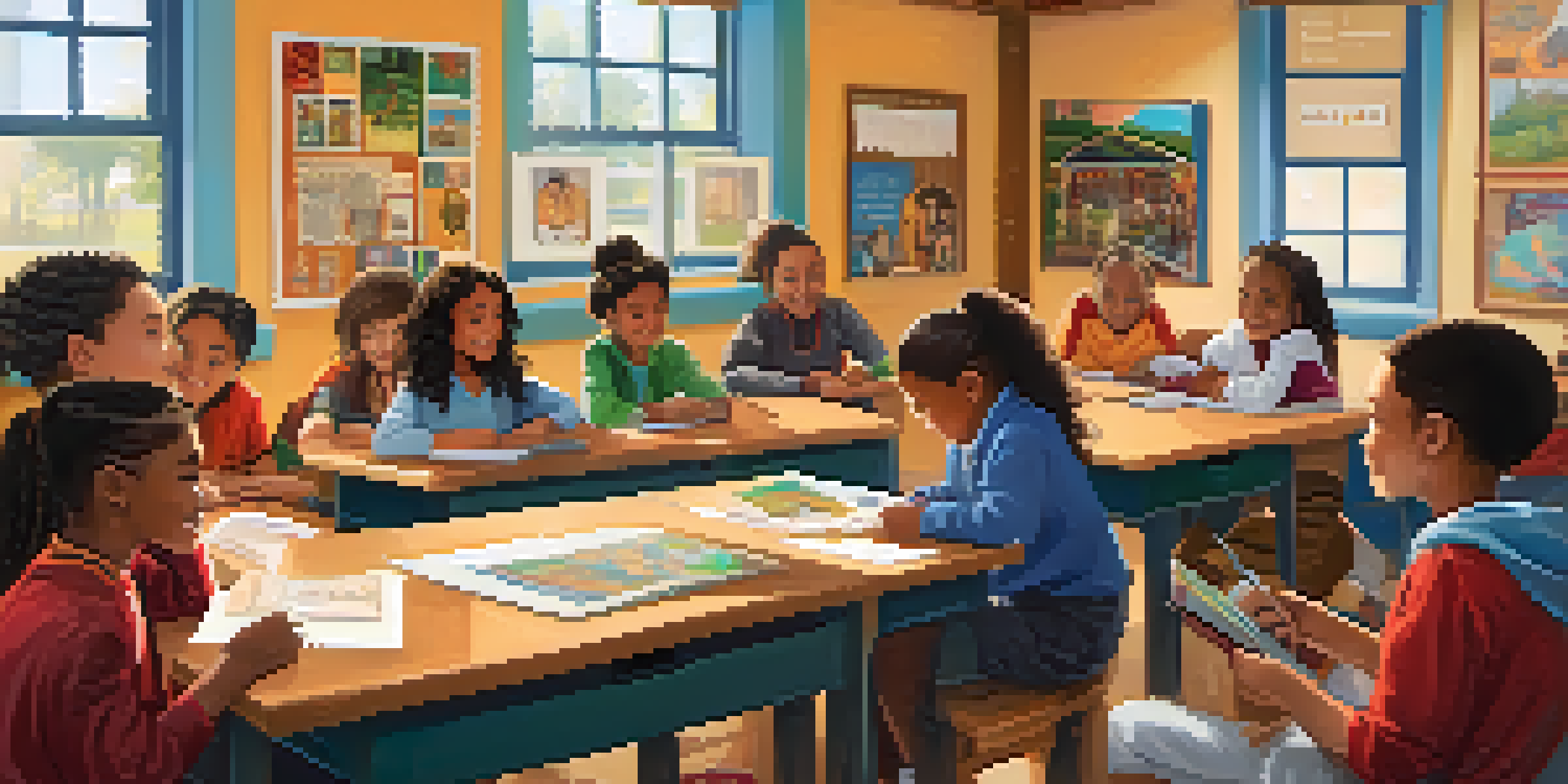The Role of Family Heritage in Curriculum Development Today

Understanding Family Heritage and Its Significance
Family heritage refers to the traditions, values, and cultural backgrounds passed down through generations. It plays a crucial role in shaping an individual’s identity and worldview. Understanding one’s heritage can foster a sense of belonging, which is essential in educational settings.
It is not what we have in life, but who we have in our life that matters.
When students connect with their family backgrounds, they often feel more engaged and motivated to learn. This connection can transform the classroom into a space where personal stories enrich the curriculum. It not only enhances academic experiences but also nurtures emotional well-being.
Incorporating family heritage into education helps students appreciate diversity. By recognizing different backgrounds, schools can create a more inclusive environment, paving the way for mutual respect and understanding among peers.
Curriculum Development: A Reflection of Society's Values
Curriculum development is not just about academic content; it reflects the values and beliefs of society. As communities evolve, so should the educational materials that represent them. Family heritage plays a vital role in this evolution, ensuring that curricula remain relevant and relatable.

By integrating family stories and traditions, educators can create a dynamic curriculum that resonates with students' lives. This approach encourages critical thinking and discussions, as students explore how their backgrounds influence their learning. It also allows for a richer exploration of subjects like history and literature.
Heritage Shapes Student Identity
Understanding family heritage fosters a sense of belonging and enhances student engagement in educational settings.
Moreover, recognizing family heritage within curriculum development can help bridge generational gaps. When older family members share their experiences, it fosters intergenerational learning, providing students with unique perspectives that textbooks alone cannot offer.
Embracing Diversity Through Heritage-Based Education
Diversity in education is essential for preparing students for a globalized world. By embracing family heritage, educators can highlight the importance of various cultures and perspectives. This approach not only enriches the curriculum but also promotes inclusivity and respect.
Education is the most powerful weapon which you can use to change the world.
For instance, incorporating cultural practices and histories into lessons can help students appreciate their peers' backgrounds. When students see their heritage represented in the classroom, they feel valued and understood. This positive reinforcement can lead to higher academic performance and social cohesion.
Additionally, heritage-based education encourages students to share their own stories. This sharing fosters a collaborative learning environment that celebrates differences, ultimately nurturing empathy and understanding among students.
The Role of Educators in Integrating Heritage
Educators play a pivotal role in weaving family heritage into the curriculum. They must be aware of their students' backgrounds and be willing to adapt their teaching methods. Understanding the cultural contexts of their students enables teachers to create more meaningful learning experiences.
By encouraging students to share their family stories, teachers can facilitate discussions that make lessons more engaging. This interaction not only enriches the curriculum but also builds a sense of community within the classroom. Teachers can become facilitators of knowledge, guiding students in exploring their heritage.
Diversity Enriches Curriculum
Incorporating family heritage into the curriculum promotes inclusivity and helps students appreciate diverse perspectives.
Moreover, professional development opportunities can equip educators with the tools needed to integrate heritage effectively. Workshops and training sessions that focus on cultural competence can empower teachers to embrace diversity in their classrooms.
Challenges in Incorporating Family Heritage in Education
While integrating family heritage into the curriculum is beneficial, it does come with challenges. One significant issue is the potential for stereotypes or misrepresentation. If not approached thoughtfully, the inclusion of certain heritages can lead to oversimplification or inaccuracies.
Educators must navigate these challenges by fostering an environment of open dialogue and critical thinking. It’s essential to present diverse perspectives and encourage students to question and explore their assumptions. This can help mitigate the risks of misrepresentation and promote a deeper understanding.
Additionally, schools may face resistance from parents or stakeholders who may not see the value in incorporating family heritage. Educators need to advocate for these changes, demonstrating how they can enhance student engagement and learning outcomes.
Case Studies: Successful Heritage Integration in Schools
Several schools have successfully integrated family heritage into their curricula, showcasing its positive impact. For example, a school in California introduced a project where students researched their family histories and presented their findings. This project not only engaged students but also strengthened community bonds.
Another instance is a program that celebrates cultural heritage months, allowing students to showcase their traditions through performances and presentations. These initiatives foster pride in one’s background while promoting mutual respect among students.
Educators as Heritage Facilitators
Teachers play a crucial role in integrating family heritage into lessons, creating meaningful learning experiences and community within the classroom.
These case studies illustrate that when students see their heritage valued in the classroom, it can lead to increased engagement and academic success. They serve as powerful examples of how family heritage can enrich education and build stronger school communities.
Looking Ahead: The Future of Heritage in Education
As we look to the future, the role of family heritage in curriculum development is likely to grow. With increasing awareness of diversity and inclusion, schools are recognizing the importance of representing different backgrounds in their teaching. This shift signifies a move toward more personalized and meaningful education.
Incorporating technology can also play a role in enhancing heritage education. Digital tools can help students document and share their family histories, creating an interactive learning experience. This not only engages students but also helps preserve cultural narratives for future generations.

Ultimately, the future of education lies in understanding and valuing the rich tapestry of family heritages. By embracing these diverse backgrounds, educators can create a more inclusive, relevant, and engaging learning environment for all students.